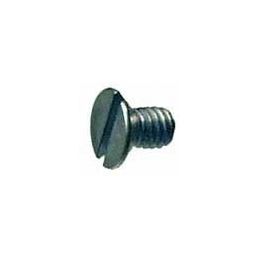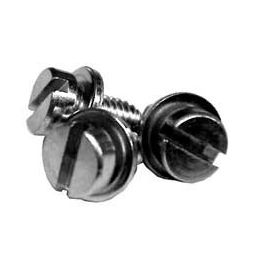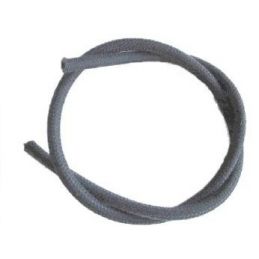How to Perform a Leak Down Test
Written by Steve Phillips for HotVWs Magazine
This is not a test where you drink beer and see how much you have to pee afterwards. This is a test of your motor to see the health of it. We have all heard of and probably have done a compression test. We have all been told we need to see over 100lbs. Well this is kinda true. If we are using it on a stock engine this can be a good test.If the motor is not stock then this can be an inaccurate judge of the health of a motor. Huh? Let me explain.
Years and years ago (I'm old), I did a compression test on my 1600 motor that was 8 to one and pretty much stock. I got a reading of 115 on the average. Oh that‘s good right? The next day, just for the hell of it, I did my drag car motor. 2110 motor with 12 to one compression ratio and a motor cam (engle fk89). The compression gauge read 80 on the average. WTF? The 1600 motor had over 40k miles on it and the 2110 motor had about 5 miles on it. How can this be? Believe it or not it's the cam. The stock cam has very little duration, so the valves don't stay open that long. When you spin it over with the starter to do your compression test a charge of air goes in the valves close and you compress it and that's what you get on your gauge. When you have a big cam with lots of duration then the valves stay open so long that with the speed of your starter a lot of air escapes out of the exhaust valve, hence the lower number on the gauge.
So what is the health of both motors? Well on the 1600 it's fine, but what about the 2110? You would need a reference number to know. What is a reference number? We have all been told over 100 is good for a stock motor but on big cam motors we don't really know unless you do this test right after you have built the motor then reference back to it after you have ran it. Now can you see why a compression test can be misleading.
So what is a leak down test and why is it better then a compression test? For starters the numbers we want to see rain true for any motor. Let's start by looking at the gauge. There are a few types on the market but they all pretty much do the same thing. One gauge will have two pressure gauges on it. I really like this type of gauge. One of the two gauges will tell us line pressure (the pressure of the air going into the gauge). You will need an air compressor capable of 100psi.
Hook the leak down gauge up to your compressor first and turn the air pressure regulator on the leak down gauge so as the line pressure is 100 psi. Next step is to put the motor on TDC for the cylinder you want to check. You might want to use a flywheel lock or put the car in gear if the motor is in the car. Now screw the hose that the gauge comes with into the spark plug hole. Hook that hose up to the gauge and see what the second gauge reads. This gauge reads what is leaking. Example: The line pressure is 100 psi and the leak gauge is reading 80 psi. That means you have 20 percent leakage. “Oh it's leaking it has to be bad”. Hold on, set the beer down. No motor is 0 leakage unless you have gapless rings and even then you can get some leakage. So what is good and what is bad? My rule of thumb here is 20 percent is marginable. Not good but not really bad. If you’re leaking 30+ the trick here is to leave the gauge hooked up and put your ear up to the exhaust pipe. Do you hear air blowing by? If you do then your exhaust valve is not seating for whatever reason. No air out of the tailpipe? Put your ear to the intake and open the throttle. Do you hear air here? Again if the answer is yes then an intake valve is leaking. No air out of the exhaust or the intake, now what? Pull off the oil cap and listen there. If you hear or feel air here then your rings are no longer seating. As you can see, not only can we see how the motor is doing we can also pinpoint the problem. Neat huh?
I work on an A-fuel dragster, which is Nitro injected. It makes about 2000 hp without a blower. To win a race we lean on it pretty hard. After each pass the car comes back and myself and one other crew member perform this test on each cylinder. If we see a number over 20 I start doing the listening game. After I find out where the leak is coming from tools start flying and I take that head off. If I didn't hear air coming out of the intake or the exhaust I know its a piston ring and my other crew member is already taking the pan off while I was taking the head off. The crew chief of this car will have pistons all set up for me and the old one comes out and the new one goes in. If it was a valve then as soon as I get the head off I already know where to look and other members are getting me what I need to fix it out and ready.
Ok Steve, I don't have a race car and never will so why do I care? Here’s why, let's say you're buying a car and the seller says oh yeah the motor has just been rebuilt. How many times have we all heard that. Well maybe before you buy it and pay that extra money because it has a rebuilt motor in it, you do a leak down test? If it's good then hey we know the upper end is good. If not maybe you should tell the seller to take the white collar off and tell you how it was rebuilt. Another use, I have had this car a long time, it has a lot of miles on it, when should I rebuild it? Do the least down test, that will help to tell you when. I have customers that bring me motor to put on my test stand and get them running for them all the time. Before I go anywhere on them, I do this leak down test. If it's bad and I hear air out the intake or exhaust I will blow off a valve cover and make sure the valves on that cylinder have lash. If they do, I'll call the customer and tell them what's up before I even try and get it running.
One problem I have with this gauge is buddies like to borrow it and I forget to return it. My suggestion is don't loan it out. Bottom line here, it's a great tool to have in your tool box. One of my go to's.







